Tones are pronounced differently depending on the degree of stress assigned to their syllable as well differing based on the speech rate. See my article “Modern Thai Tones” for a full description of the Thai tone system for more background on Thai tones, and “Thai Word and Syllable Stress” for background on how to know which syllables are stressed.
Reference Diagrams
Take a look at the following diagrams, which I will break down into key take-aways.
Tones in Stressed and Unstressed syllables
Stressed/unstressed syllables depending on length of syllables in the word1source: Tingsabadh 1997
This set of diagrams shows the tonal patterns for stressed and unstressed syllables depending on the amount of syllables in the original word.
Unstressed

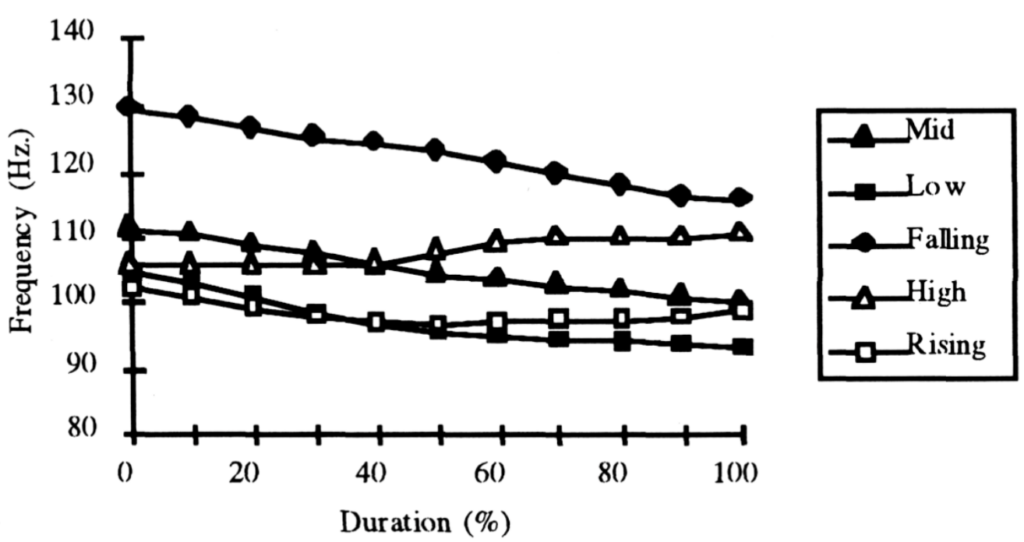
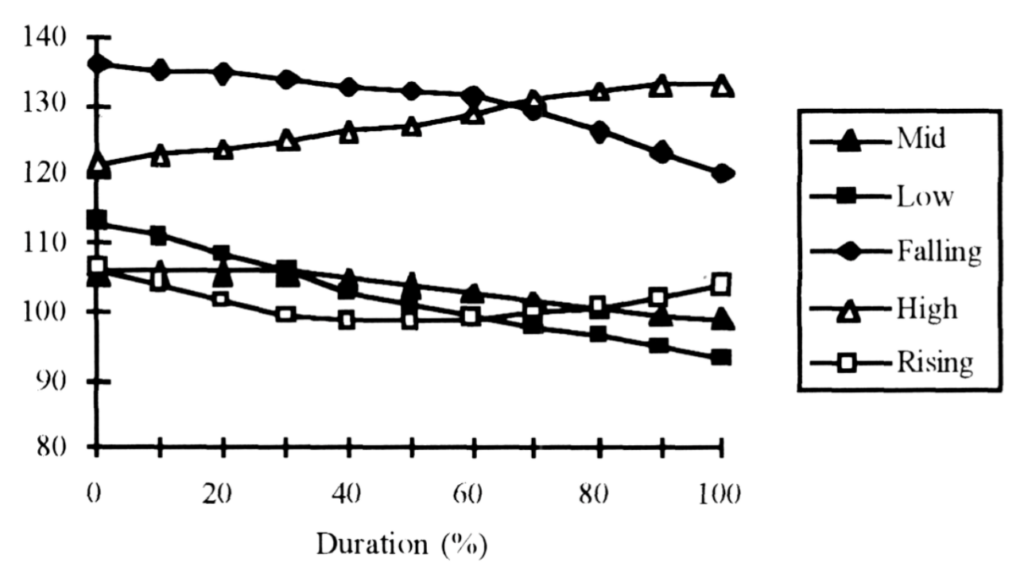
Stressed

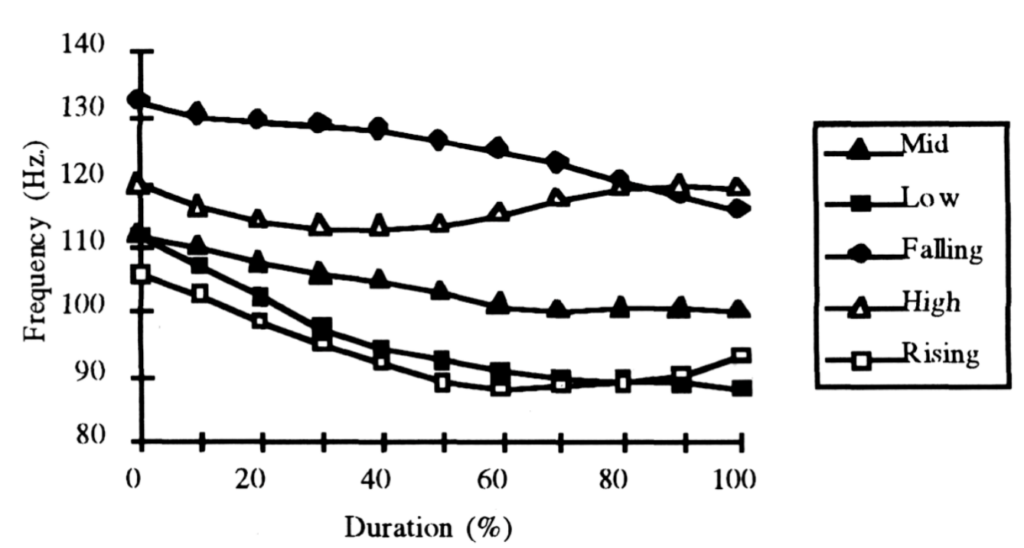
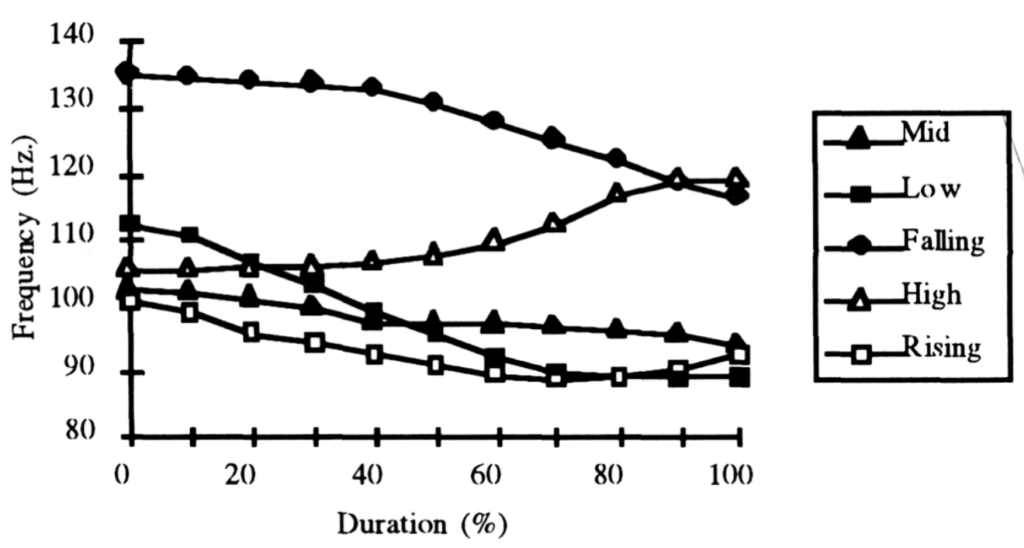
All tones in stressed and unstressed syllables2Source: Potisuk 1994
This diagram (from another paper) shows a neat summary of the tonal patterns in the two types of syllables.
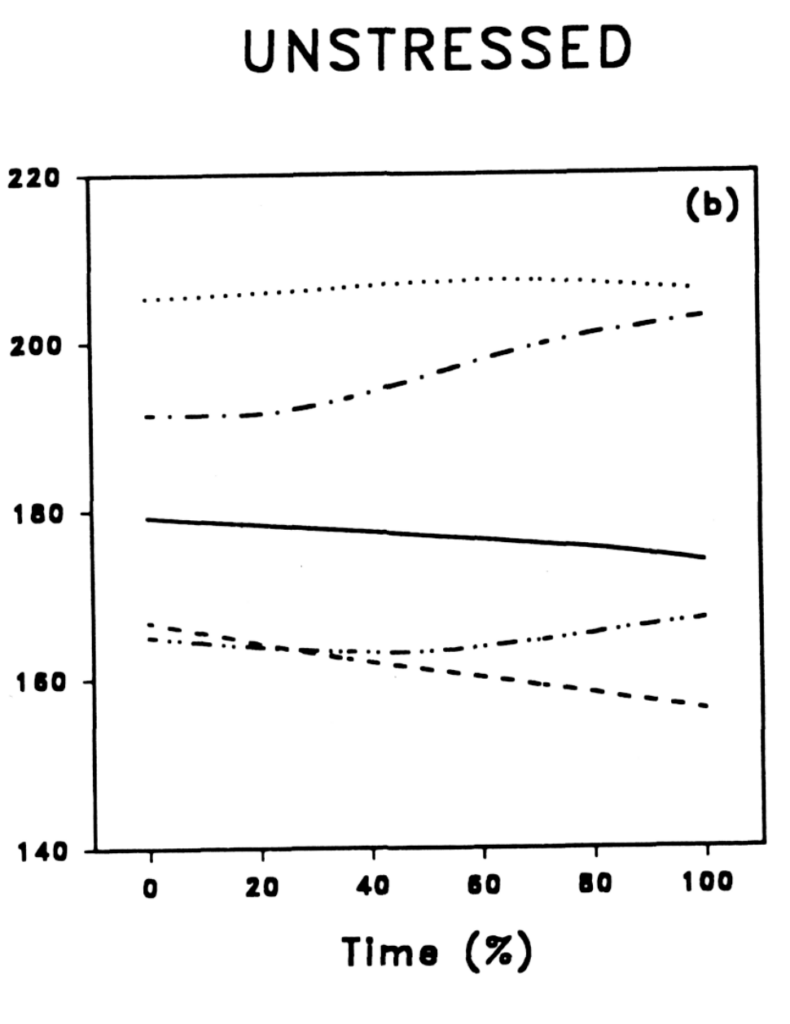

Tones as a function of speaking rate
This diagram (from a third paper) introduces another aspect: speaking rate. To put it simply, with a slow speaking rate, unstressed tones look pretty similar to their stressed counterparts, but when speaking quickly, they’re simplified as the previous diagrams show.

Take-aways
It’s worth keeping in mind that the papers referenced above used different speakers and methodologies and were conducted at different times, which is why the results aren’t identical. However, all these different diagrams broadly paint the same picture.
The most important things to pay attention to are as follows:
- Tonal distinctions are all maintained, even when spoken quickly and in unstressed syllables.
- The falling tone loses its distinct fall unless it’s stressed (i.e. it’s actually pronounced as a high flat tone), or if the speech rate is very slow (and thus not natural-sounding). This also means that when you have several falling tones in a row, you only need to pronounce a fall in the last syllable of the sequence if it’s stressed (or none if none of the syllables are stressed).
- The rising tone maintains a dipping contour in all contexts, but the degree to which it rises back up depends on whether the syllable is stressed and the speech rate. The important thing to note here as a learner is that while the rising tone becomes quite similar to the low tone, it’s still distinguished by a rise in the second half, even in fast unstressed syllables.
Basically, tones become much straighter and much closer together in unstressed syllables. As a learner, this means that you need to pronounce tones in a more relaxed way with simpler contours in unstressed syllables, and should focus on enunciating the final, stressed syllable of each word with the full tone as described in Modern Thai Tones.
Tones in Context
In this section, I’ll provide some diagrams that show how tones are pronounced in real contexts so you can see the real contours.
In this diagram from Gandour 1999, the first syllable has a falling tone, the second is unstressed, and the third is stressed. The solid line represents fast speech, and the dotted line represents slow speech.

And here’s a diagram on 2-syllable pitch pattern combinations from a paper developing a predictive model of Thai pitch targets (Prom-On 2012):

Pay attention to how in both studies, while the tonal distinctions are all maintained in all positions, the exact contours are smoothed out. Try reading some sample sentences in Thai and reference these two diagrams for a mental image of how the tones should flow together for practice.
Conclusion
In this article, I covered how tones change depending on whether they’re in a stressed syllable.
Keeping these details in mind may seem overwhelming at first, but it’s better to know what’s going on based on peer-reviewed research than to try to figure out the rules and tendencies with just your own ears. This knowledge, combined with lots of practice, will result in your Thai sounding very natural.
More about Thai phonology
Sources
- Tingsabadh, K. and Deeprasert, D., 1997. Tones in Standard Thai connected speech. Southeast Asian Linguistic Studies in Honour of Vichin Panupong, pp.297-307.
- Gandour, J., Tumtavitikul, A. and Satthamnuwong, N., 1999. Effects of speaking rate on Thai tones. Phonetica, 56(3-4), pp.123-134.
- Prom-On, S. and Xu, Y., 2012. Pitch target representation of Thai tones. In Tonal Aspects of Languages-Third International Symposium.
- Potisuk, S., Gandour, J. and Harper, M., 1994. F0 correlates of stress in Thai. Linguistics of the Tibeto-Burman area, 17(2), pp.1-27.